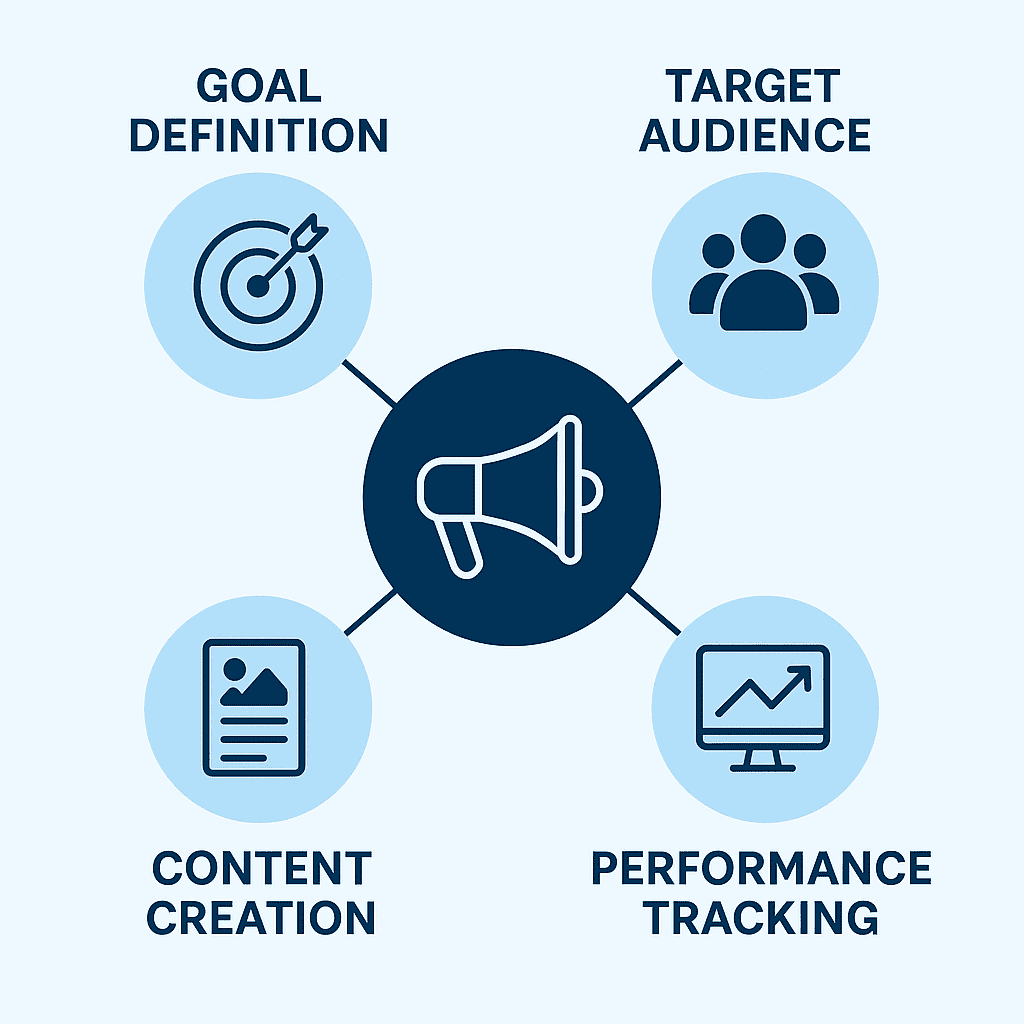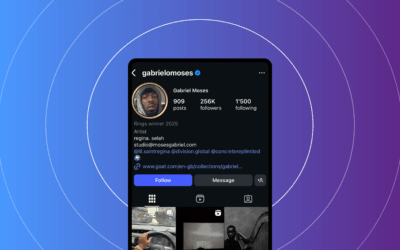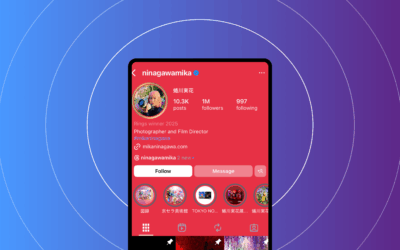Influencer Marketing Strategies for 2025
Influencer marketing strategies are changing fast. Brands now need to earn attention, protect trust, and prove business impact as AI reshapes how content is made and shared. CMOs and brand leaders ask: what works right now, and how do we scale it safely?
In this guide, we define the term clearly, explain how AI-assisted content creation affects social and journalism, and walk through the 4 M’s and 3 R’s frameworks. You’ll see a practical SaaS strategy example, plus a measurement plan and toolbox. We close with a 30/60/90-day playbook, ethics guidance, and a FAQ.
Quick answer: Influencer marketing strategies are the coordinated plans brands use to partner with creators and journalists to drive awareness, trust, and measurable business outcomes—now increasingly augmented by AI for scale and personalization.
By the end, you’ll know exactly how to design, fund, and measure a pilot program. Use the included checklist and SaaS example to pilot a program.

What are influencer marketing strategies?
Definition
Influencer marketing strategies are structured programs that align brand mission, creator partnerships, content formats, distribution channels and measurement to influence buyer behavior and brand perception. In 2025 these strategies integrate AI for ideation, personalization, and scale while maintaining governance and disclosure.
Source: Influencer Marketing Hub Benchmark Report
Context
A decade ago, “influencer” mostly meant celebrity endorsements. Today, influence comes from a diverse mix: professional creators, niche experts, journalists, analysts, customers, employees, and community leaders. Programs now blend paid, earned, and UGC, and often include brand ambassadors who co-create content for months, not days. For a deeper look at micro-influencers, see What is a Micro Influencer?.
Core components
- Objectives: awareness, preference, trials, sales, retention.
- Audience: ICPs, segments, regions, language.
- Creators: format fit, credibility, brand-safe values.
- Content formats: short video, long-form, carousels, livestreams, webinars, newsletters, UGC.
- Distribution: organic, paid amplification, email, partner syndication, newsroom placements.
- Measurement: KPIs, attribution plan, lift tests, revenue tie-out.
- Governance: FTC-compliant disclosure, contracts, content rights, AI usage policy.
SaaS note: Product-led growth, efficient CAC and higher LTV, and community onboarding are key implications for SaaS brands using influencer programs.
Why it matters
Marketers keep investing because well-run programs can yield strong ROI, especially when content is repurposed across paid and owned channels.
PAA quick definition: Influencer marketing strategies are structured plans that connect brand goals to the right creators, content, channels, and measurement—now scaled and personalized with AI while staying compliant.
The AI-augmented content creation landscape
AI is changing content creation in three big ways: speed and scale, personalization, and editorial help. Teams ideate faster, produce more formats, and localize content by market. But risks—hallucinations, bias, and disclosure gaps—call for clear guardrails.
AI’s role in social media content creation
What AI can do well:
- Research and ideation: generate topic clusters, hooks, and outlines tuned to personas.
- Drafting: captions, scripts, titles, thumbnail copy; create variations for hooks and CTAs.
- Enhancement: auto-captions, subtitles, clean edits, b‑roll ideas, image touch-ups.
- Localization: language translation and cultural adaptation for micro-audiences.
- Personalization: dynamic snippets for segments by role, industry, or region.
Sample micro-workflow
- AI brief: turn the campaign brief into 20 hook ideas and 10 script outlines.
- Creator co-creation: creator records or drafts; human editor refines for brand voice and truth.
- Compliance review: check disclosures and claims; log prompts and approvals.
- Scheduled posting: post natively; add UTMs; queue paid amplification.
Helpful tools
- Copy ideation: GPT family for drafts, variations, outlines
Audio/video: Descript and Runway for editing and generation
Localization: DeepL for translation
AI within journalism and brand storytelling
Publishers use AI to assist research, summaries, and first-draft copy. Branded content teams and newsroom studios partner with brands while upholding editorial standards and labeling. Associated Press guidance for responsible AI use in newsrooms—human oversight, disclosure, and fact-checking: AP News AI Standards
Risks and guardrails
- Risks: Hallucinations, biased outputs, wrong attribution, over-personalization.
- Guardrails: Human-in-the-loop review, provenance, and clear disclosure (FTC Endorsement Guides).
Adoption trend
Marketers are rapidly adding AI into daily workflows—from ideation to editing to measurement. See the latest adoption stats from eMarketer/Insider Intelligence.
Compliance anchors:
Opportunities and guardrails:
- Do: Human review for facts; provenance metadata; clear creator and brand disclosure; keep drafts for audits; AI usage log.
- Don’t: Publish AI-only content without review; unverifiable claims; hide partnerships; skip platform disclosures.
AI can speed creation, testing, and localization for influencer marketing strategies, but always pair it with human oversight, transparent disclosure, and an audit trail (AP; FTC; eMarketer; IMH; MIT Technology Review).
Core framework: The 4 M’s of influencer marketing
Mission
Mission = brand objectives, audience alignment, and messaging goals. Define success early.
- Tactics: Pick a business metric (MQLs, free trials, SQLs, revenue, retention).
- Map to funnel stages: discovery, activation, conversion, retention.
- Set an LTV/CAC hypothesis: target CAC delta and LTV uplift.
- Size the pilot: number of creators, posts, markets, paid support.
- Align early with sales/CS: agree on lead routing and onboarding.
KPIs: Reach, brand lift, trials attributable, SQLs, CAC change, LTV delta.
SaaS example: Aim for a 15% lift in trial sign-ups from a creator-led webinar plus a short-form series.
Messaging
Definition: The narrative the creator communicates and the creative boundaries.
Brief template:
- Objective: The business outcome you want.
- Top 3 messages: One value prop per message.
- Do/Don’ts: Allowed claims; prohibited phrases.
- CTA: Link or landing page.
- Disclosure language: Exact wording and placement.
- Samples: Hooks, captions, scripts, thumbnails.
Tactics
- Iterate hooks with AI-assisted A/B tests for titles and thumbnails.
- Keep creator voice; require truth, clarity, compliance.
- Provide assets and product access for authentic demos.
Marketplace
Vetting checklist
- Audience overlap with ICP.
- Engagement authenticity.
- Vertical fit and past brand partnerships.
- Content quality and format fit.
- Content rights needs.
- Exclusivity windows to prevent conflicts.
Contracts
- Usage rights, duration, platforms, territories.
- Payment terms and timing.
- Deliverables and KPIs.
- Disclosure requirements and platform tags.
- Content approval SLA and revision limits.
- Indemnities and brand safety clauses.
Compensation models
- Flat fee for predictability.
- Performance bonus for outcomes.
- Revenue share or affiliate for ongoing programs.
- Hybrids for larger launches.
Discovery tools
CreatorIQ, Clickanalytic, Upfluence, and HypeAuditor are common vetting tools.
Measurement
Definition: Tie creator activity to business outcomes via analytics, multi-touch attribution, and experiments.
Tactics
- UTMs: Consistent naming conventions per creator/post.
Event tracking: GA4 events; server-side conversion API.
Promo codes: Backup attribution for stories/podcasts/video.
Incrementality: Holdout groups to estimate lift (Nielsen).
Weekly optimization: Swap hooks, thumbnails, formats, posting times.
Example dashboard fields
- Impressions; engagement rate; clicks; click-to-trial %; trial-to-paid %; CAC uplift; LTV delta; MRR change.
Example MRR calculation (assumptions clearly stated):
Assumptions: 40,000 clicks; 10% click-to-trial; 20% trial-to-paid; $70 ARPU; 6-month LTV multiple = 3x ARPU.
Math: 40,000 × 10% = 4,000 trials → 4,000 × 20% = 800 new customers → MRR = 800 × $70 = $56,000 → 6-month LTV ≈ $336,000.
Compare against total campaign cost to estimate ROI. Holdout lift helps avoid over-attribution (Nielsen • Google Analytics).
Compliance reminder
Use clear disclosures in every creative as per FTC guidance.
Quick comparison bullets (4 M’s at a glance)
- Mission: Define business outcome; KPI: trial sign-ups; Tool: GA4 + CRM.
- Messaging: Align narrative and creative rules; KPI: hook hold-rate; Tool: GPT for variations.
- Marketplace: Pick creators and terms; KPI:qualified reach; Tool: CreatorIQ/HypeAuditor.
- Measurement: Prove impact and optimize; KPI: incremental lift; Tool: Nielsen-style holdout.
Supplementary framework: The 3 R’s of influencer marketing
Definitions
- Reach: The size and quality of the audience you can access.
- Relevance: The creator’s topical fit and alignment with your value prop.
- Resonance: How strongly the audience engages and acts on the content.
Tactical metrics
- Reach quality: first-party overlap with your ICP; unique reach by market.
- Relevance: topical affinity score; content-to-product fit.
- Resonance: median watch time, saves/shares, comment sentiment.
Rules of thumb
- For niche SaaS, prioritize micro/mid creators with high resonance over raw reach.
- Favor creators who teach, demo, or review tools in your category.
- Mix in a few broader-reach partners if budget allows.
How 3 R’s inform the 4 M’s
- Marketplace: Use the 3 R’s to shortlist and vet creators.
- Messaging: Tailor scripts to boost resonance; emphasize the most relevant use cases.
The best influencer marketing strategy: a practical example (SaaS case study)
Company profile
- Product: Remote-first productivity SaaS for cross-functional teams.
- Stage: $10–50M ARR.
- Persona: Product managers at mid-market companies (US, UK, DACH).
Objective
Run a 3-month pilot to lift free-trial sign-ups and improve MQL→SQL conversion.
Platform choices (why)
LinkedIn for B2B decision-makers; YouTube Shorts for demos; X/Twitter for threads; TikTok for awareness.
For more on creator discovery and platform choices, see our guide on What is a Twitter handle? and our guide to engaging creators.
Creator selection criteria
- Audience fit: PMs, ops, engineering leadership.
- Format fit: Can teach, demo, and break down workflows.
- Engagement authenticity: Healthy, not bot-driven.
- B2B credibility: Prior tool reviews or SaaS education.
- Professional reputation: Consistent, brand-safe track record.
- Micro-influencer focus: Prioritize high-resonance niche creators (What is a Micro Influencer? A Modern Guide for Brands and Marketers) (link).
Content plan and AI-assisted workflow
-
Phase 0: Brief creation – Use the Messaging template: objective, top 3 messages, do/don’ts, CTA, disclosure copy.
Asset guidelines: Influencer Media Kit. -
Phase 1: AI ideation – Generate 20 hooks and 10 short scripts via an LLM; shortlist best 6 with creators for fit and voice.
-
Phase 2: Co-creation – Creator records raw video; brand edits with Descript or Runway; add subtitles and product callouts; human review checks facts.
-
Phase 3: Localization and A/B testing – Translate captions for EN/DE/ES via DeepL; create 3 thumbnail/title variants per video; test hooks for lift.
Whitelisting and paid boosts: see Whitelisting guide for content teams. -
Phase 4: Activation and paid amplification – Post natively with platform tags and UTMs; whitelist top posts for lookalikes; retarget with product templates and webinars.
Compliance and disclosure
Example disclosure: “#ad — Partnered with [Brand]. Opinions are my own.” Use platform-specific tools and phrasing:
Platform Disclosure Requirements
– TikTok: Use the in-app paid partnership tag.
– YouTube: Follow paid promotion labeling.
– LinkedIn: Add “Paid partnership with [Brand]” in first lines and on images/videos (guidance).
– FTC: Follow FTC Endorsement Guides for clear disclosures.
Expected metrics and sample dashboard
- Impressions; engagement rate; clicks; trial sign-ups; trial→paid; CAC attribution; MRR uplift.
Example math (assumptions):
1.2M impressions; 1.5% CTR → 18,000 clicks; 12% click→trial → 2,160 trials; 18% trial→paid → 389 new customers; $70 ARPU → $27,230 MRR. Holdout lift helps avoid over-crediting
Step-by-step playbook: 30/60/90-day plan
Step 1: Discovery & vetting (Week 0–2)
- Tasks: Define objective and KPIs; map customer journey; create persona profiles; longlist creators; run overlap/authenticity checks.
- Roles: Head of Growth, Social Lead, Analyst.
- Tools: Clickanalytic, CreatorIQ, HypeAuditor.
- Deliverables: One-page strategy brief; top 10 creators with reach, relevance, resonance; risk notes.
Step 2: Campaign design (Week 2–3)
Tasks: Finalize creative brief; pick formats; write disclosure language; plan A/B test for hooks/thumbnails; UTM naming; contracts.
Roles: Social Lead, Legal, PMM.
Outputs: Final brief; content calendar; approval SLA; contract templates.
Step 3: Activation & governance (Week 3–8)
Tasks: Onboard creators; AI ideation; production and edits; compliance checks; rights logging; scheduling; whitelisting plan.
Outputs: Approved assets; rights log; posting schedule; paid amplification plan.
Step 4: Measurement & optimization (Week 4–12)
Tasks: Implement GA4 events; set UTMs; run incrementality test with holdout groups; weekly standups; swap hooks.
Outputs: Live dashboard; mid-campaign pivot memo; final ROI & lift report
Step 5: Ethics & newsroom/brand alignment (ongoing)
Tasks: Review editorial standards; verify disclosure; crisis plan; audit AI prompts and approvals.
Outputs: Disclosure policy; escalation flowchart; audit-ready docs.
Downloadable quick-start checklist (print-friendly)
- Define mission and KPIs
- Map funnel and personas
- Build creator shortlist using 3 R’s
- Draft brief + scripts
- Approve disclosure language
- Finalize contracts and rights
- Configure UTMs and GA4 events
- Launch calendar + paid plan
- Weekly optimization cadence
- Post-campaign lift analysis + lessons learned
Metrics and measurement that matter
KPI taxonomy by funnel stage
- Discovery: Impressions, reach, view-through rate.
- Activation: Click-through rate (CTR), click-to-trial conversion.
- Conversion: Trial-to-paid %, CAC attributable, revenue per campaign.
- Retention: Churn delta, LTV uplift, referral rate.
Benchmarks and context
Use benchmarks as directional guidance. Influencer Marketing Hub publishes annual engagement ranges, CPMs, and format trends—compare to your vertical and platform mix
Measurement techniques:
Holdout test (simple steps)
- Pick two similar markets; hold back creator content in one.
- Run in the other; keep paid spend constant.
- Compare trial and revenue deltas; adjust for baseline differences.
- Compute incremental lift = (Test – Control) / Control.
Data sources mapping
- Platform analytics: Impressions, ER, average watch time.
- Ad manager: Paid reach, spend, frequency.
- GA4/Attribution: Clicks, assisted conversions, conversion paths.
- CRM: MQL/SQL, revenue, LTV, churn.
Tools, platforms, and workflows
Platform Disclosure Resources:
-
Instagram: Disclosures and branded content tools
-
TikTok: Safety and disclosure guidance
-
YouTube: Paid promotion policy and labeling
-
LinkedIn: Paid partnerships help
Influencer Vetting Platforms:
AI tools for ideation, copy, and editing
Workflow recommendations
- Single source of truth: Notion/Asana/Airtable for briefs, approvals, and rights.
- Rights & asset management: Track master files, usage windows, territories, expirations; schedule takedowns.
Ethics, privacy, and risk management
-
Legal and Disclosure Checklist
-
Always disclose plainly; use platform tools; follow FTC guidelines.
Detecting Fake Followers
-
Watch for sudden spikes, low-quality comments, or bot-like activity; compare with HypeAuditor and other analytics signals.
Privacy
-
Do not collect PII in creator content.
-
Use secure landing pages.
-
Execute Data Processing Agreements (DPAs) with vendors.
-
Crisis and rapid-response playbook
- Detect: social listening for missteps.
- Contain: pause content and paid boosts; secure assets.
- Communicate: draft factual statements; reinforce standards.
- Engage: align with creator on next steps; consider corrective posts.
- Learn: post-mortem; update vetting and approval flows.
Platform policies for safety and disclosures
Frequently asked questions (FAQ)
What is the best strategy for influencer marketing?
The best strategy aligns your brand mission with the right audience via the right creators, runs a 30–90 day pilot, and measures impact with tracked KPIs and incrementality testing. Use the 4 M’s (Mission, Messaging, Marketplace, Measurement) and prioritize authenticity and clear disclosure.
(Source: Influencer Marketing Hub Benchmark Report)
What are the 3 R’s of influencer marketing?
The 3 R’s are Reach, Relevance, and Resonance. They help you measure audience size, fit, and engagement quality. For niche SaaS, high resonance from micro-creators often outperforms broad reach with lower relevance. (See Core framework in this article.)
What are the 4 M’s of influencer marketing?
The 4 M’s are Mission, Messaging, Marketplace, and Measurement. They guide strategy, creative rules, creator selection, and proof of impact—especially helpful for SaaS pilots. (Source: 4 M’s section in this article.)
What are the 4 marketing strategies?
Most people mean the 4 Ps: Product, Price, Place, and Promotion. Influencer programs map to Promotion and also touch Product (demos), Place (channels), and even Price (trial incentives). This is especially true in SaaS where usage and content intersect.
How should I use AI in influencer campaigns?
Use AI for ideation, drafts, captions, and localization, but keep human review for facts and claims. Log prompts and sources, maintain provenance, and disclose sponsored content per FTC rules.
How do I measure influencer marketing ROI for SaaS?
Tag every post with UTMs, track trials and downstream revenue in GA4 and your CRM, and run a holdout test to estimate incremental lift. Tie results to CAC and LTV to judge efficiency (Google Analytics • Nielsen).
Conclusion
Influencer marketing strategies work best when grounded in the 4 M’s (Mission, Messaging, Marketplace, Measurement) and guided by the 3 R’s (Reach, Relevance, Resonance). Add AI-assisted content creation to speed ideation, testing, and localization—but protect trust with human review and clear disclosure.
Influencer Marketing Articles
Actionable tips to get more success with influencer marketing campaigns
Reach vs Impressions: What’s the Difference (and Why It Matters)
If you’ve ever looked at a campaign report and wondered why impressions are higher than reach, you’re not alone... The difference between Reach vs Impressions is one of the most misunderstood topics in marketing 🤔 Yet understanding Reach vs Impressions directly...
Who is Gabriel Moses?
Discover Gabriel Moses, the London-born artist blending fashion, music, and heritage into striking visual narratives. From Dior to Johnnie Walker, see why he’s shaping culture.
Who is Mika Ninagawa?
Discover Mika Ninagawa, Tokyo’s visionary photographer and film director celebrated for her vivid art, bold storytelling, and win at Instagram Rings 2025.






